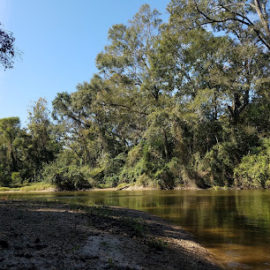
Not known for being a clean river, the Mississippi has been used as a dump for sewage and other runoffs all through its length. In 1972 the Clean Water Act was enacted and the river began a path to clean up. A recent LSU study by Gene Turner shows progress.
Long treated as a drain for Midwest farms, factories and cities, the river has coursed with a nasty mix of bacteria, lead and toxic chemicals.But a new LSU study shows that the lowest downriver reaches of the river have been getting cleaner since the 1970s, when Congress passed the Clean Water Act, a landmark piece of legislation considered one of the most powerful environmental laws in U.S. history.
nola.com
The study looked at the Mississippi in Louisiana which means at the end where all of the dumping up river ends up. It all flows downhill! Additionally the oxygen and pH levels have improved.
The proof of the Clean Water Act’s prowess is in the data, said Eugene Turner, an oceanography and coastal sciences professor and the study’s author. Turner collected and analyzed federal, state and city water quality records from four Louisiana locations dating from 1901. His reconstructed record from a century’s worth of river testing at St. Francisville, Plaquemine, New Orleans and Belle Chasse shows a clear and steady decline in bacteria, lead and other pollutants since the Clean Water Act was enacted in 1972. “My meeker mind thought the Mississippi River couldn’t possibly be influenced by one single single thing,” he said. “But it was.”
The primary drop was in bacteria.
The precipitous drop in bacteria — much of which stems from human and animal waste — was stunning, Turner said. “It’s 1% of what it was before the 1980s,” Turner said. The reason is simple: “We have sewage treatment plants now,” he said. Before the Clean Water Act, it was common for cities to pipe sewage into the nearest creek or river. Efforts to build or improve sewage treatment plants were often met with fierce resistance, usually over their high costs. Dumping is, after all, much cheaper than treating, Turner said.
The river is cleaner but many of the sewage plants were built in the mid-70’s to comply with the regulations of the Clean Water Act. They are old and in need of replacement. The Act also looked at lead which affects children.
Along with bacteria, the law took particular aim at lead, an element that’s especially harmful to the development of children’s brains and was once common in household paints and gasoline. In the lower Mississippi, lead concentrations are about 1,000 times lower than they were in 1979, according to water quality data Turner collected from the state Department of Environmental Quality testing locations in St. Francisville, Plaquemine and Belle Chasse. Turner said the lead data is somewhat incomplete because the agency stopped testing in 2011 after a 10-year period of stabilized lead concentrations.
Today a new threat threatens the river – plastic.
Plastic waste is another growing concern. The Gulf has one of the highest concentrations of plastic pollution in the world, and much of it arrives from the Mississippi River, according to other research by LSU. Regulations haven’t caught up with the risk, as was underscored by the slow and indecisive response to the huge spill of plastic pellets, or nurdles, from a cargo ship in New Orleans last year. “We’re putting plastic in our river in incredible amounts, and not just from that nurdle spill,” Turner said. “That’s what we used to do with sewage and lead. We just threw it in the river until we eventually realized that’s not good and we did something about it.”
The Mississippi is at our doorstep and we need to keep her clean.



